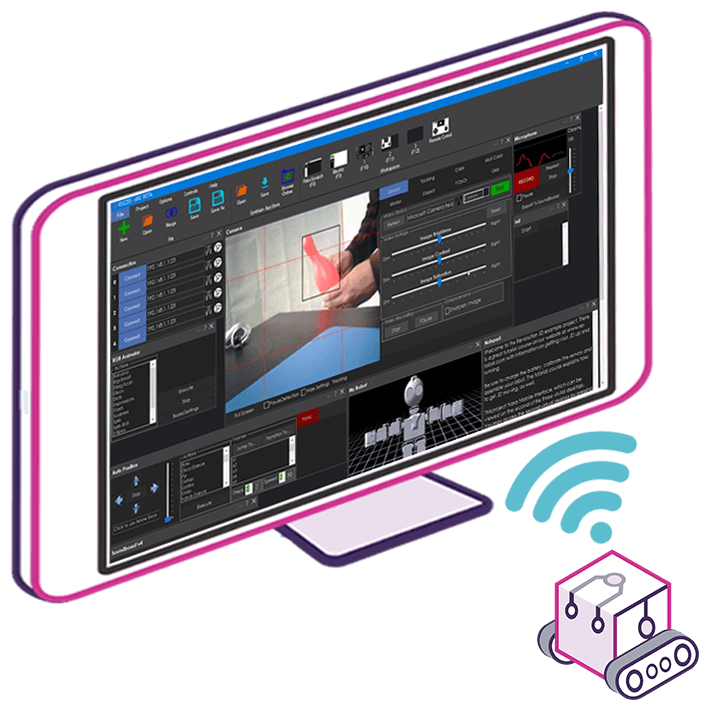botmaker58
What is the best way to attach an LED as an indicator on a digital port? I tried by connecting an LED with a 330 ohm resistor to the GND and signal pins, and this works, but I just wondered if this should best be done with external power (I plan to add several of these) or off of the EZ-Robot board? I will be running off of a battery once I get everything configured.
I am building this robot on a RS Robie Sr. chassis. I plan to replace the existing bulbs that are the "eyes" with bright large LEDs, and putting in a red LED for the mouth. I also hope to mount an old Lifebook to run ARC, integrate a GPS, and a laptop style camera.
I find the ARC to be amazingly easy to operate, and look forward to adding many other features in a second round of modifications including a way to make the head turn, see if I can articulate the arms, add some distance sensors (IR and Ultrasonic).
I would like to have LED's light up when various functions are turned on.

According to https://synthiam.com/Community/Questions/2909 you don't need the resistor, just connect it direct to the signal and ground wires. (See DJ's post #4 on page 2)
Awesome, thanks! I tried to search for LED topics, but had not found that post.
Do you know about the power draw affecting this board if I utilize several LEDs on different ports?
The LED tutorial page is here: https://synthiam.com/Tutorials/Hardware.aspx?id=7
The board will provide 5 amps. The EZ-B will provide about 100 ma per digital pin.
Understand your EZ-B on this tutorial page: https://synthiam.com/Tutorials/Default.aspx?id=2
Excellent, I will study this, thanks for the fast responses all!
And in addition, if you want to ground the electronics to a flat plane, try using small pcbs, soldering a header first on to the pcb, and then an led. After that, carefully solder two wires-each for the led's leads; one to each lead of the header. Make sure you have the right polarities to match up with the servo extensions, connect the extensions on the header and to the EZ-B, and voila: bright, colorful leds.